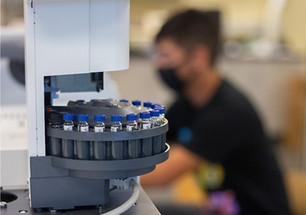Posted by Chrom Tech on 14th Oct 2025
True Crime and Chromatography
True crime has long captivated audiences, blending real-life mystery, suspense, and forensic science into compelling storytelling. Whether through podcasts, documentaries, or books, these stories invite us to explore the methods investigators use to solve seemingly impossible cases. But behind every shocking twist and courtroom revelation lies a world of scientific precision—where chromatography plays a vital role in uncovering the truth.
Forensic Scientists’ Role in True Crime
Behind every solved case stands a team of forensic experts dedicated to analyzing the smallest pieces of evidence. While DNA profiling and fingerprint matching often steal the spotlight, chromatography remains one of the most powerful and underappreciated tools in forensic science. This analytical technique helps scientists identify trace substances in biological samples such as blood, hair, or fibers, as well as residues found on clothing or at crime scenes. Through these analyses, investigators can determine whether drugs, toxins, or other compounds were present at the time of a crime—providing crucial leads that may not be visible to the naked eye.
Chromatography in Forensic Investigations
In death investigations, gas chromatography (GC) and liquid chromatography (LC) are frequently employed to identify and quantify substances found in biological fluids. These techniques can detect drugs, alcohols, or poisons postmortem, helping forensic toxicologists determine the cause of death and potentially reveal a motive. Chromatography is also used in arson analysis to detect traces of accelerants such as gasoline or kerosene, linking physical evidence to criminal activity.
Whether analyzing explosives, identifying chemical residues, or confirming the presence of controlled substances, chromatography’s precision makes it indispensable in modern forensic laboratories.
Improving Sample Analysis Accuracy
Forensic samples are often complex mixtures containing contaminants, interferences, or degraded materials. To ensure accurate analytical results, scientists use sample preparation techniques before injecting samples into chromatographic instruments. Filtration and solid phase extraction (SPE) are particularly effective methods for removing impurities and concentrating analytes of interest. Products such as Agilent’s Bond Elut SPE line are widely used to clean up forensic samples, improving data quality, reproducibility, and sensitivity across a wide range of analytes.
Expanding Your Knowledge
The next time you watch or listen to your favorite true crime story, remember the dedicated scientists whose work turns evidence into answers. Their use of advanced tools like chromatography helps bring justice to victims and closure to families. For more fascinating chromatography applications across environmental, pharmaceutical, and forensic industries, explore our other blogs or subscribe to our newsletter for regular updates from Chrom Tech.
Frequently Asked Questions About Chromatography in Forensics
How is chromatography used in forensic science?
Chromatography separates and identifies chemical compounds in samples such as blood, hair, fabric, or residue from a crime scene. It helps determine the presence of drugs, toxins, or accelerants that may be linked to a criminal act.
What types of chromatography are used in criminal investigations?
Gas chromatography (GC) and liquid chromatography (LC) are commonly used. GC identifies volatile compounds like drugs and accelerants, while LC is suited for non-volatile or thermally unstable substances.
Why is sample preparation important in forensic chromatography?
Proper sample cleanup—using filtration or SPE—removes interfering substances, improving the accuracy and reliability of chromatographic results in forensic analyses.

